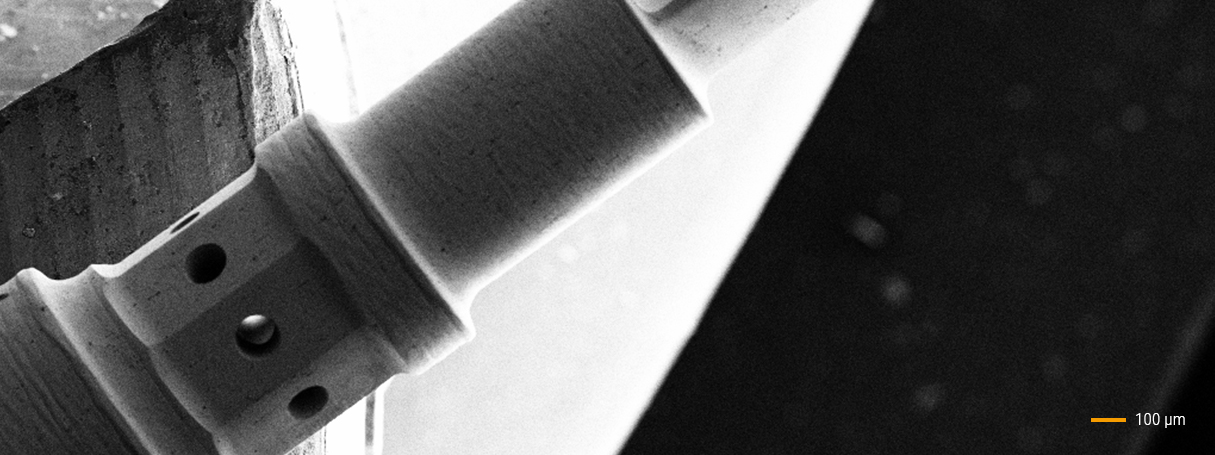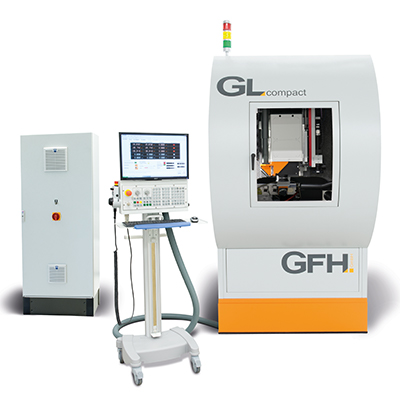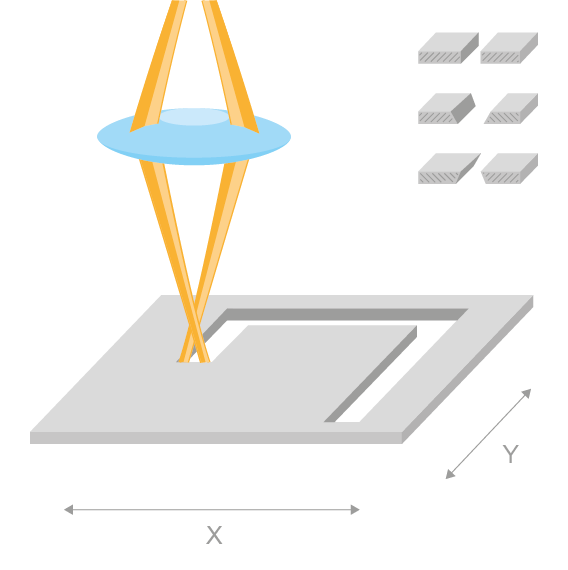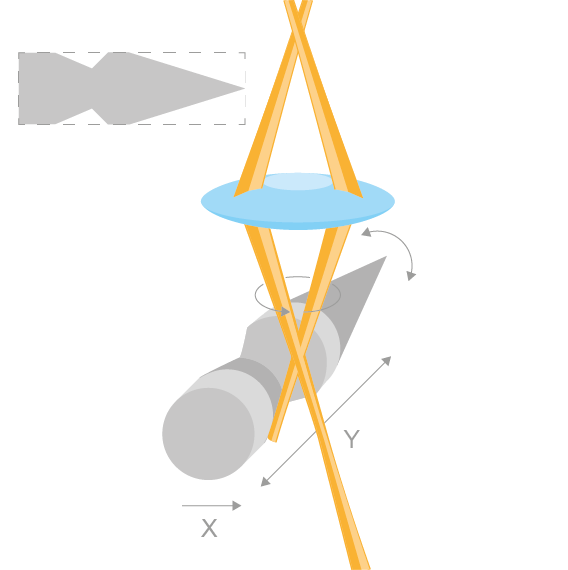Manufacturing precision parts using an ultrashort pulse laser.

Highly precise laser processing with a rotating beam enables micro-drilling, micro-cutting, and micro-turning.
Ultrashort pulse lasers have been industrially available for several years and are increasingly being used in everyday production. Due to their ability to focus on an extremely small tool size, as well as their contactless and athermal operation, they are very well suited for micro-processing. However, to compete with conventional manufacturing methods such as EDM, milling, punching, honing, or grinding in micro-drilling, micro-cutting, and micro-turning, the laser beam must be shaped into a defined tool and moved over the workpiece at the appropriate speed. The laser system specialist GFH GmbH has addressed this issue by developing a special trepanning optic, which directs the laser beam into a highly precise circular path at up to 30,000 rpm. Additionally, it allows for precise adjustment of the diameter and tilt angle. The trepanning optic is used in conjunction with the established micro-processing systems GL.evo and GL.compact, which ensure high precision in the positioning of components and flexible machine operation.
When processing precision parts with ultrashort pulse lasers, the energy of a pulse affects the workpiece for only a few picoseconds or less. As a result, the material vaporizes at the desired location almost instantaneously, without causing melting or thermal changes in the surrounding area. Furthermore, the high intensity of each individual pulse allows for processing without material constraints, enabling even the hardest materials like diamond to be worked without wear.

GL.evo

GL.compact
High-precision micro-processing
To turn the laser spot into a precise tool, GFH GmbH utilizes the specially developed drilling optic GL.trepan. At the core is a rotating cylindrical lens telescope, housed within a finely balanced precision spindle, which guides the laser beam onto a perfect circular path at speeds of up to 30,000 rpm. In addition to the rotation speed, the circle diameter and the tilt angle are adjusted using the corresponding software. In addition to the rotational movement on the workpiece, the beam profile itself is rotated, resulting in greater process robustness and enabling the creation of a round bore even with an irregular laser spot. While conventional methods either offer tools only in fixed increments or require the fabrication of special tools, with GL.trepan, the tool size can be adjusted to within a micron. In addition to micro drilling, GL.trepan can also be used for cutting and turning.

GL.trepan
The optical concept of GL.trepan is based on a rotating cylindrical lens telescope housed within a finely balanced precision spindle.
Flexible adjustments possible thanks to innovative software
By adjusting the tilt angle, it's possible to eliminate the predetermined wall angle in laser processing and create cylindrical or even negatively conical bores with an aspect ratio of up to 1:20 (diameter/length) in material thicknesses up to two millimeters. Here, bore diameters ranging from 20 μm to 500 μm are possible. The roundness of the bores is better than 95 percent with a standard deviation of 0.01. In combination with the high-precision axis systems of the GL.evo and GL.compact, this optic can also be used for precision cutting and turning. When cutting, adjusting the rotation diameter and tilt angle determines the kerf width and the wall angle. The cut along the cutting contour is achieved through relative movement of the axis system in X and Y. The cutting speed depends on the material and the thickness of the material. For example, stainless steel with a thickness of 0.2 mm can be cut with high precision, achieving vertical cut edges at a feed rate of 250 mm/min.
For the first time, GFH GmbH is introducing high-precision laser turning with ultrashort pulse lasers: In this process, the workpiece is rotated through a rotational axis, while linear axes deliver it radially and axially to the rotating and tilted laser beam, also controlled by GL.trepan. This technique allows for roughing and finishing operations to be performed without any loss of quality, which is not possible with any other athermal laser processes. As a result, several mm³/min of material can be removed while still achieving a surface quality with a roughness of up to Ra=0.1 μm. The workpiece diameter can range from 0.03 to 10 mm. Air-bearing axes are used, which, in combination with contactless processing, achieve contour accuracy with a standard deviation of less than 0.3 μm and roundness of less than one micrometer. Since the tool geometry can be flexibly and quickly adjusted via software settings, it's even possible to combine the processes of micro drilling, cutting, and turning in a single tool setup within the machining of a part. This avoids a loss of accuracy due to re-clamping and time-consuming measuring operations.
The laser processes for high-precision manufacturing of micro parts with ultrashort pulse lasers, along with the tailored system technology, will be showcased at Laser World of Photonics 2017 in Hall A2, Booth 552. The GFH GmbH team will be available to visitors for specific inquiries and initial discussions.

laser drilling
The rotating and tilted laser beam allows for laser drilling with both positive and negative angles as well as cylindrical holes.

Fine cutting
Precision cutting with a rotating and tilted beam and relative movement of the workpiece using the axis system.

Laser turning
Laser turning with a rotating and tilted beam in combination with a rotating and linearly moving workpiece.